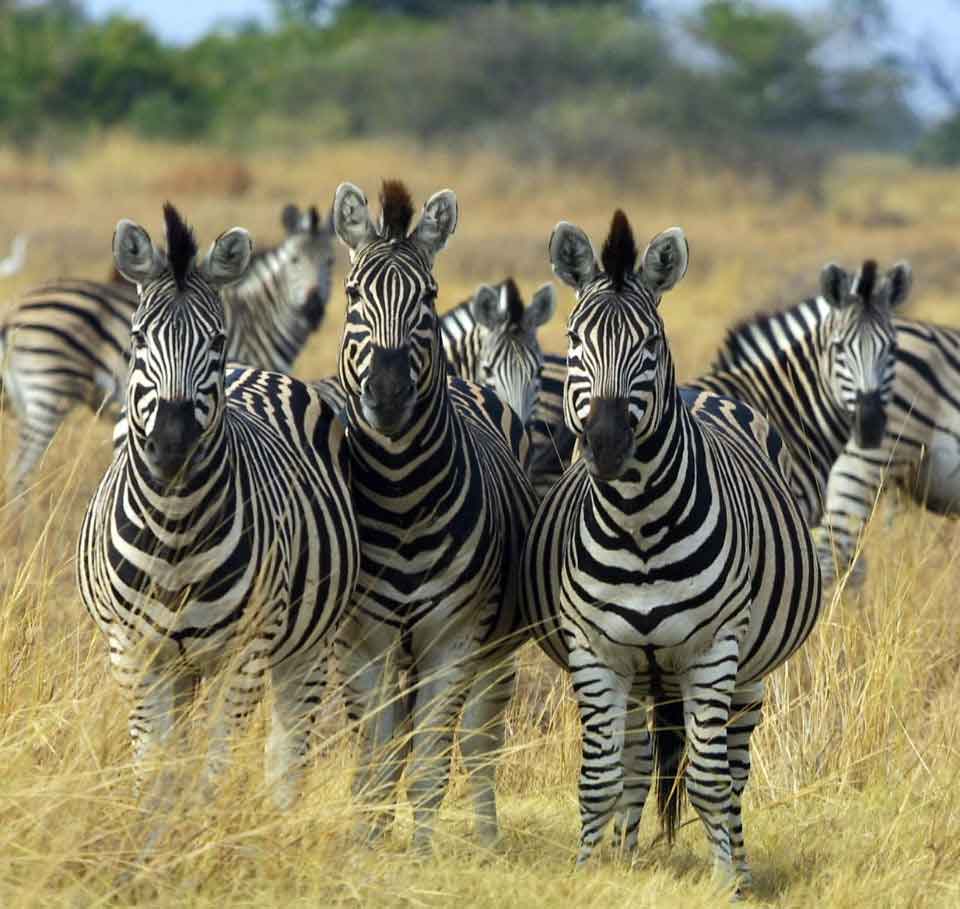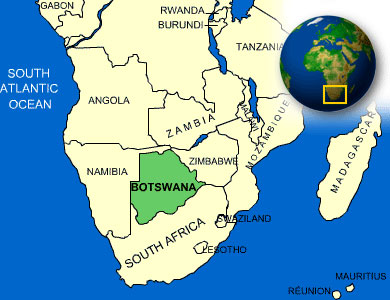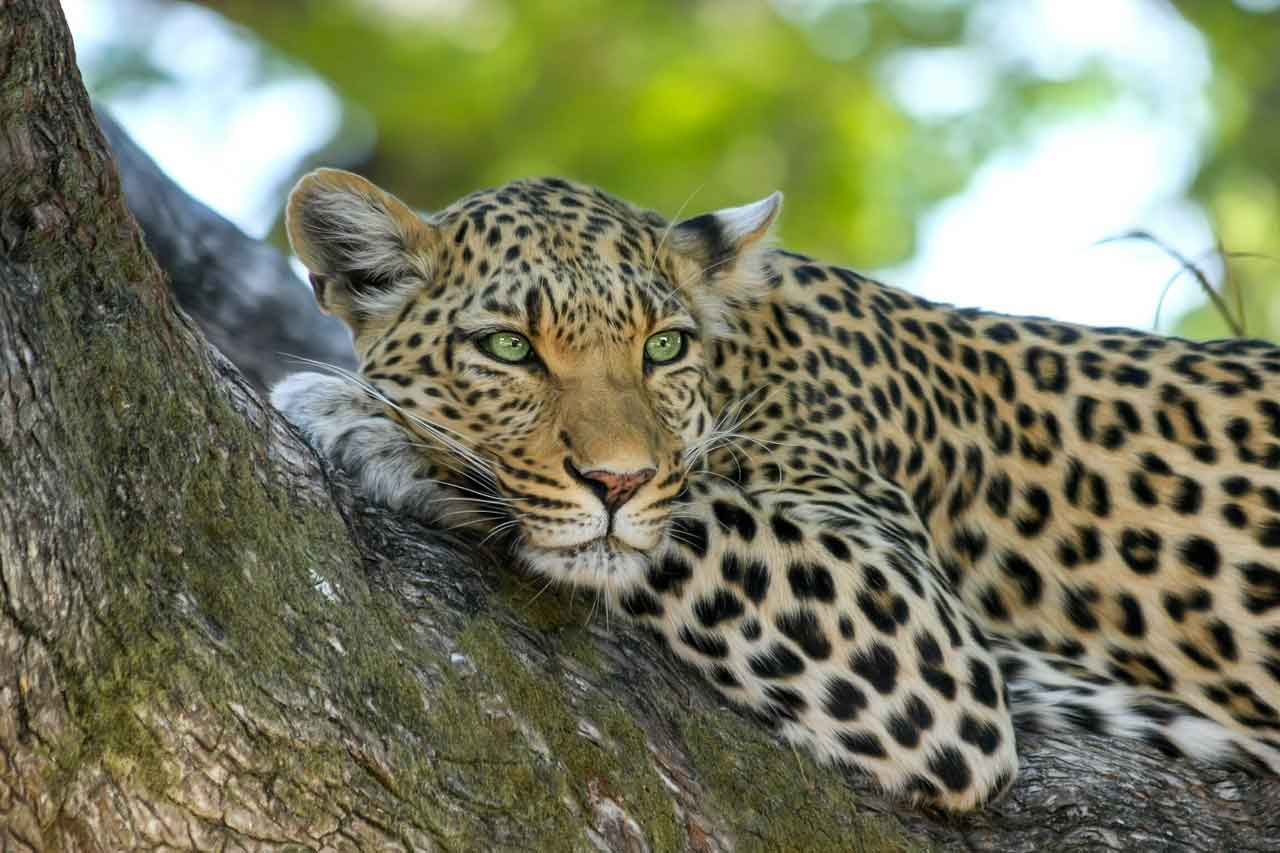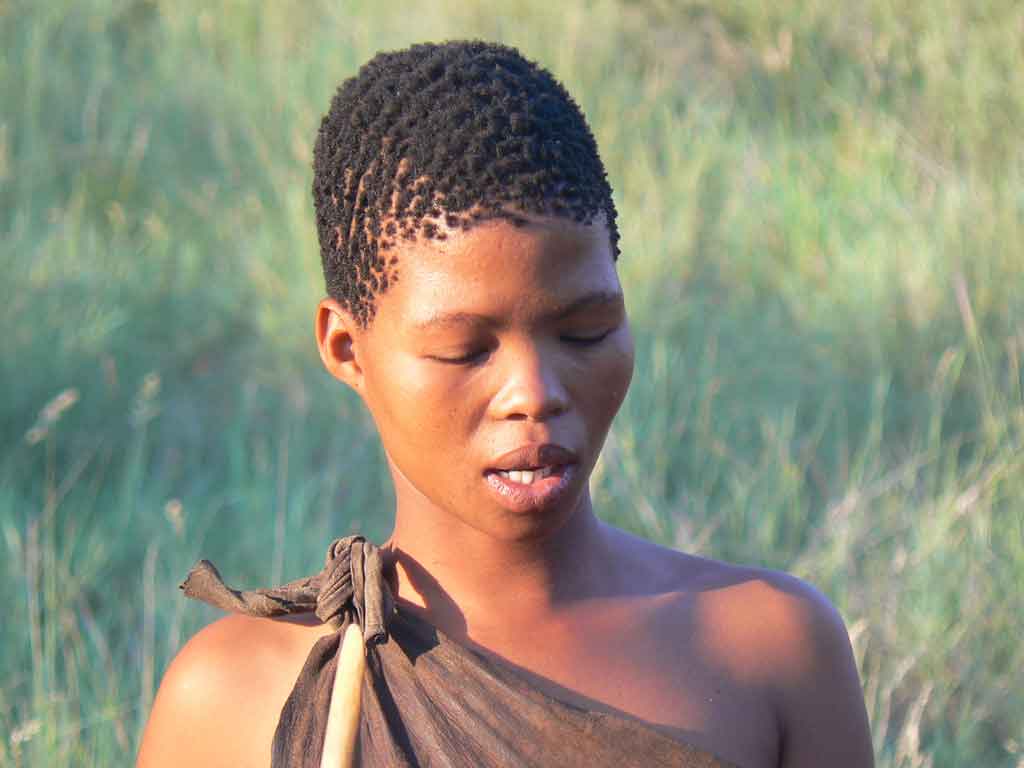Adventure in Botswana
Introduction to the Land of the Kalahari
Exploring Botswana Africa Geographia
Botswana is one of the few remaining destinations in Africa that still provides a good sense of the adventure of safari. Its expansive game parks and preserves, while offering wildlife as diverse and abundant as that found anywhere else, are still largely undeveloped and untamed.
Location, Geography and Climate
Botswana lies immediately to the north of South Africa. It is bordered on the north and west by Namibia, on the north and east by Zimbabwe, and is connected by a narrow strip of land on the northern border to Zambia. Its territory consists almost entirely of a broad, flat, arid subtropical plateau, though there are hills in the eastern part of the country.

In the northwest, the Okavango River empties into the Kalahari sands, creating the largest inland river delta in the world. While the Okavango Delta is home to relatively few large game animals in comparison to other areas of Botswana, its clear waters and myriad small islands are home to an astounding variety of birds, plants, and smaller species of animals.
Nearby is Chobe National Park, a beautiful grassland reserve that has gained international fame for its abundant elephant population. Southeast of Chobe are Botswana's enormous Makgadikgadi salt pans, home to large herds of blue wildebeest, several antelope species, and those international lovers of salt pans, flamingos.
Almost the entire remaining portion of the country is covered by the Kalahari Desert--a varied environment of sand, savanna, and grassland. Although this area of Botswana is only sparsely inhabited by humans, it is one of the richest wildlife regions in all of Africa.

Botswana's two largest parks, the Central Kalahari Game reserve and Gemsbok National Park, are found in this region.
Botswana's climate can get rather cool, particularly during the dry winter months of June-August when night occasionally brings frost. The rainy summer months (December through March) are best avoided for those interested in enjoying the best game viewing conditions.
History and People
The aboriginal inhabitants of Botswana, who have made the Kalahari their home for at least 30,000 years, are the San, or bushmen. The San number about 60,000 today, constituting a small but fascinating cultural minority in the country. Almost two millennia ago, a Bantu people known as the Tswana arrived, supplanting the San and now constituting the great majority of the population.

The discovery of gold in Botswana in the late 19th century attracted the interest of the Boers, leading the fiercely independent but desperate Tswana nations to petition the British for protection.
Botswana was granted protectorate status (as Bechuanaland) in 1885, though local authority was maintained with determination by the Tswana chiefs. In 1966, in the same wave of change that brought independence to much of the continent, Bechuanaland became the independent Republic of Botswana.
The very next year, the discovery of enormous diamond reserves in Botswana transformed the poor country's economic prospects. Today it enjoys one of the highest economic growth rates of any country in the world, although its national wealth has not solved the problem of widespread unemployment.
Exploring Botswana Africa GeographiaCopyright (c) 1996-2015 InterKnowledge Corp. All rights reserved.